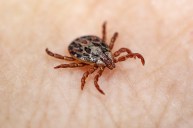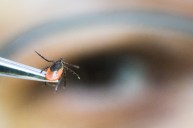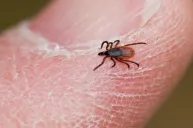Researchers are warning about a potentially deadly bacteria that's shown up in a invasive species of ticks for the first time. Connecticut officials confirmed the first case in the country of the bacteria in the invasive tick in America.
For the first time, the bacteria has showed up in the invasive longhorned tick. However, it's previously shown up in other tick species. This bacteria can cause a potentially fatal disease called human monocytic ehrlichiosis, or HME. Up until now, no ticks in America have tested positive for this virus.
Rare diseases.org describe the disease, "Human Monocytic Ehrlichiosis (HME) is a rare infectious disease belonging to a group of diseases known as the Human Ehrlichioses. These diseases are caused by bacteria belonging to the 'Ehrlichia' family. Several forms of Human Ehrlichioses have been identified, including Human Monocytic Ehrlichiosis, Sennetsu Fever, and Human Granulocytic Ehrlichiosis. Though caused by different strains of Ehrlichia bacteria, the disorders are characterized by similar symptoms."
Invasive Ticks And Disease
Meanwhile, the Centers for Disease Control and Prevention also weighed in on the diesease.
The CDC says, "Ehrlichiosis is the general name used to describe diseases caused by the bacteria Ehrlichia chaffeensis, E. ewingii, or E. muris eauclairensis in the United States. These bacteria are spread to people primarily through the bite of infected ticks including the lone star tick (Amblyomma americanum) and the blacklegged tick (Ixodes scapularis)."
Also, according to the organization, symptoms include "fever, chills, headache, muscle aches, and sometimes upset stomach."
While found in the lone star ticks previously, it's the first time HME causing bacteria has appeared in the invasive longhorned tick. The reason for concern is that longhorn ticks are invasive and expected to spread far.
"The first fully engorged human-parasitizing longhorned tick specimen was recorded by the CAES in 2018 from Fairfield, Connecticut, and the first populations of the tick were reported from this county in 2020," said Dr. Goudarz Molaei, director of the CAES Passive Tick and Tick-Borne Disease Surveillance Program (via New York Post). "Since then, populations of longhorned ticks have expanded into a number of towns in Fairfield and New Haven Counties. Additionally, individual tick specimens have been collected from New London and other counties."




